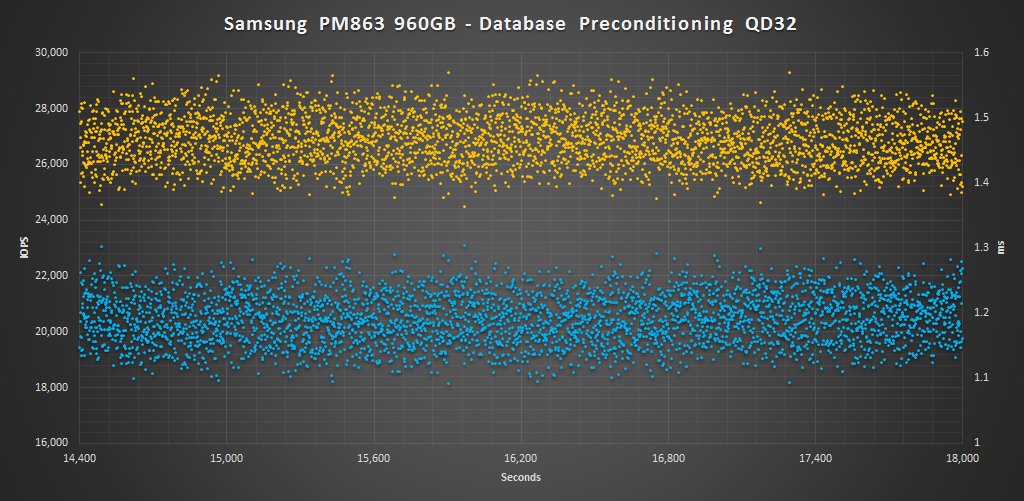SERVER PROFILES
While synthetic 100% read or 100% write workloads do a great job of testing the underlying technology and reporting easy to understand results, they aren’t always indicative of how the drive will be used by the end user. Workloads that simulate enterprise environments try to bridge that gap without being overly complex. The process of measuring our server workload performance is the same as measuring random. The drive is first secure erased to get it in a clean state. Next, the drive is filled by sequentially writing to the RAW NAND capacity twice. We then precondition the drive with respective server workload at QD32 until the drive is in a steady state. Finally, we cycle through QD1-32 for 5 minutes each measuring performance. All this is scripted to run with no breaks in between. The last hour of preconditioning, the average IOPS, and average latency for each QD is graphed below.
The Database profile is 8K transfers, and 67% percent of operations are reads.
The results speak for themselves. The SM863 was clearly the winner here during the database benchmark as this is the type of workload it was designed for. The SM863 didn’t do too shabby however, it bested its predecessor and the M510DC after QD4. Latency was well controlled with both drives keeping under 1.25ms at QD32.
The Email Server profile is similar to the Database profile, only it 8K transfers at 50% reads and 50% writes.
Again, in this type of scenario the SM863 shows a clear lead over the comparison drives. It maxed out at 25K IOPS at a QD16 and the PM863 maxed out at 18K at QD16 as well. Latency here was well controlled under 1.75ms for both.
 The SSD Review The Worlds Dedicated SSD Education and Review Resource |
The SSD Review The Worlds Dedicated SSD Education and Review Resource | 


It’s amazing that last year a slower 4TB drive went for $4,000, now for $2,200 you can do better.
Nice thorough review btw.
Does the SM863 (all capacities) support opal 2.0 out of the box?